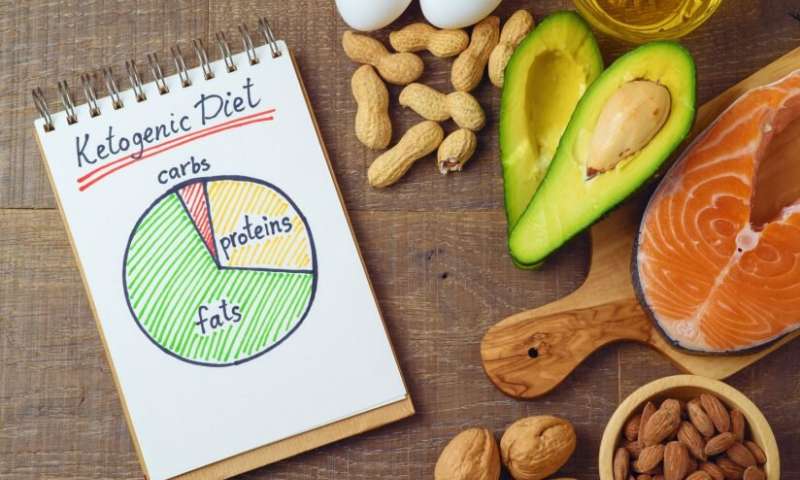A Simple Guide Through the Keto Diet

Should you try the keto diet? This low-carb, high-fat diet has become popular for its fast weight loss benefits, appetite control, and heart disease prevention. Both men and women find that getting into ketosis leads to shedding pounds fast. With this diet, it’s all about counting carbs and moderating what you eat so that you get enough protein and calories from healthy fats.
A Simple Guide Through the Keto Diet-
What is Keto?
Keto is short for the ketogenic diet, which is a very low carb, high-fat weight loss diet. There are multiple studies that show keto is one of the best ways to lose weight and stay healthy, but there are also additional benefits against cancer, epilepsy, Alzheimer’s disease, and diabetes.
Basically, this diet restricts you to 20 grams or less of carbs per day until your body enters a state of “ketosis.” Once in this phase, your body starts turning your fat into ketones, which it uses for energy.
There are also a few different types of ketogenic diets that each have their own keto recipes. These include:
- Standard keto diet (SKD): Very low-carb with protein and high fat intake with about 70% of your intake being fat. The rest is protein and carbs.
- Cyclical keto diet (CKD): This is a cyclical diet where you spend 5 days on a very low carb, high-fat diet, with 2 days of high carb intake.
- Targeted keto diet (TKD): You can eat more carbs on high energy gym and workout days.
- High-protein ketogenic diet: While this is much like the standard diet, you eat more protein in this version.
Most people wanting to
start with the standard keto diet, then modify it from there to meet their goals.
Foods to Eat on Keto
One of the main things to learn about keto is what you can eat. Keto recipes mainly include protein, vegetables, and some dairy. You are allowed between 20 and 50 carbs per day depending on the keto diet you choose.
Some of the foods on the approved keto diet list are:
- Fish
- Shellfish
- Low-carb, non-starchy vegetables such as cauliflower, kale, broccoli, zucchini, and squash
- Cheese (can you eat cheese on the carnivore diet, interested?, find out now!)
- Avocados
- Red meat
- Poultry
- Eggs
- Coconut oil
- Most dairy products like yogurt, cottage cheese, butter, milk, etc
- Olive oil
- Nuts
- Seeds
- Berries
- Shirataki noodles
- Olives
- Unsweetened coffee
- Dark chocolate
- Cocoa powder
Ketogenic diets are all about fewer carbs and carbs so that you eat mostly protein and vegetables. Many keto recipes focus on using cauliflower as a substitute for starches, as you can use it to recreate rice, potato, and snack dishes.
Foods to Avoid on Keto
The key to being successful with this diet is limiting your carb intake as much as possible and getting most of your calories from the high-fat intake. Once you do this, your body will enter and stay in ketosis, which means that it’s constantly burning fat.
This means that you should eliminate or drastically reduce eating the following grains:
- White bread
- Flour and corn tortillas
- Rice
- Quinoa
- Sandwich wraps
- Sourdough
- Wheat
- Corn
- Pasta
In addition, there are some high-carb fruits that you also have to reduce or remove from your diet, including:
- Oranges
- Tangerines
- Grapes
- Bananas
- Pineapples
- Apples
- Pears
- Mangos
- Peaches
- Nectarines
- Raisins and dates
- Fruit juices
Most starchy vegetables will also be too high in carbs to eat regularly. This mainly means that you may not be able to eat potatoes anymore. In addition, most peas and beans are also too starchy to be included in a keto diet.
While on keto, most dieters also have to look at what they drink. Fruit juices, sodas, hot chocolate, lemonade, sweet tea, dessert coffees like frappuccinos, cocktails, and sports drinks have too many carbs as well.
Should You Do the Keto Diet?
Keto is for those who want to lose weight and do not mind a restrictive diet. While some athletes swear by this diet, others say that it doesn’t work if you are doing high-intensity training, which requires a high-carb intake. You should always check in with your doctor, as keto can cause complications with some conditions such as type 1 or type 2 diabetes.
 Tagged:
keto bread, keto snacks
Tagged:
keto bread, keto snacks











